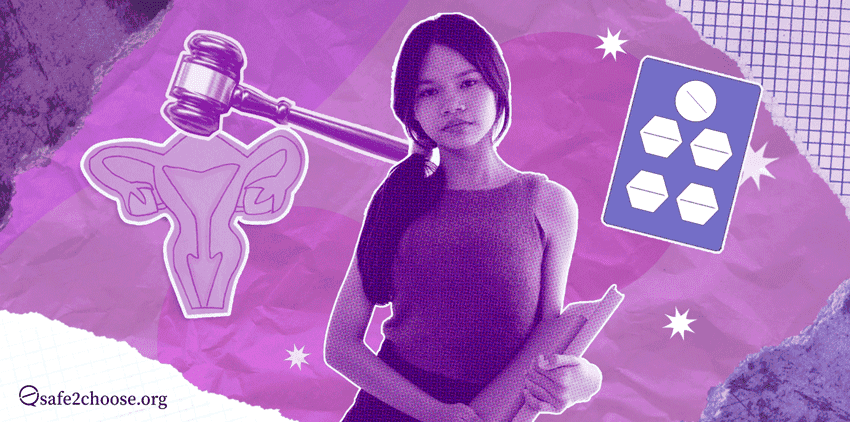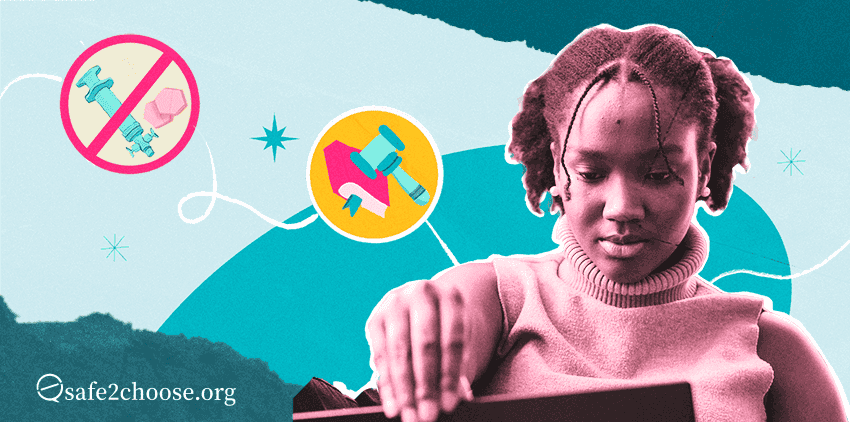Ce que vous devez savoir
L’avortement reste légalement restreint aux Philippines, mais de nombreuses femmes cherchent des informations sur les méthodes d’avortement autogéré. Si vous envisagez vos options, il est essentiel de comprendre le cadre légal, les ressources disponibles et les considérations de sécurité.
Comprendre le contexte philippin
Aux Philippines, l’avortement est criminalisé, ce qui signifie qu’il n’existe pas de prestataires légaux d’avortement dans le pays. Cependant, l’avortement autogéré avec des pilules est une option médicalement reconnue lorsqu’il est effectué correctement et avec des conseils appropriés, bien que les restrictions légales aux Philippines puissent compliquer l'accès à cette méthode.
Méthodes sûres d’avortement pour une grossesse d’un mois
Avortement autogéré (Pilules abortives – Mifépristone & Misoprostol)
L’Organisation mondiale de la santé (OMS) reconnaît ces médicaments comme sûrs et efficaces pour interrompre une grossesse précoce. L'avortement médicamenteux peut être pratiqué au-delà de 13 semaines. Si vous êtes enceinte de plus de 13 semaines. Si vous êtes enceinte de plus de 13 semaines, le processus est différent et nécessite des soins particuliers. Veuillez donc contacter notre équipe de conseil pour obtenir les conseils appropriés et les options disponibles.
Guide étape par étape pour l’avortement autogéré
- Prenez 1 Mifépristone (200mg) – Avalez le comprimé avec de l’eau. Cela bloque l’hormone nécessaire à la poursuite de la grossesse. Si vous vomissez dans les 30 minutes, reprenez une autre dose si disponible.
- Attendez au moins 24 heures mais pas plus de 48 heures pour passer à l’étape suivante.
- Prenez 800 mg d’ibuprofène (ou un autre antidouleur) 30 minutes avant d’utiliser le Misoprostol pour atténuer les crampes.
- Placez 4 comprimés de Misoprostol (200 mcg chacun) sous votre langue et laissez-les se dissoudre pendant 30 minutes. Vous pouvez avaler votre salive, mais ne mangez ni ne buvez pendant ces 30 minutes. Après 30 minutes, buvez de l'eau et avalez le reste des comprimés.
- Si des vomissements surviennent dans les 30 minutes, répétez la dose de misoprostol.
- Le saignement et les crampes devraient commencer dans quelques heures.
- Si vous êtes enceinte de moins de 9 semaines, vous n'aurez probablement pas besoin d'une deuxième dose. Si aucun saignement ne survient dans les 24 heures, prenez 4 autres comprimés de Misoprostol de la même manière.
- Si vous êtes enceinte de 9 à 13 semaines, il est conseillé d’utiliser 4 autres comprimés de misoprostol de la même manière que vous avez utilisé la première dose, 4 heures plus tard.
- Surveillez vos symptômes et demandez conseil si nécessaire.
Le Mifépristone et le Misoprostol sont généralement sûrs et efficaces. Cependant, il est essentiel de connaître les effets secondaires possibles et les complications.
Effets secondaires courants
- Effets attendus :
- Crampes utérines et saignements vaginaux : Ces symptômes sont normaux et indiquent que le processus d’avortement est en cours.
- Autres effets possibles :
- Fièvre et frissons : Une légère élévation de la température corporelle ou une sensation de froid.
- Nausées et vomissements : Sensation de malaise ou épisodes de vomissement.
- Diarrhée : Selles molles ou liquides.
Ces effets secondaires sont généralement temporaires et disparaissent sans intervention médicale.
Quand demander une assistance médicale ?
Surveillez votre état de santé tout au long du processus. Consultez immédiatement un médecin si vous ressentez :
- Des saignements abondants : Si vous remplissez deux serviettes hygiéniques ou plus par heure pendant deux heures consécutives.
- Des douleurs abdominales intenses : Une douleur sévère qui ne disparaît pas avec des analgésiques en vente libre.
- Une forte fièvre : Une température supérieure à 38°C (100,4°F) pendant plus de 24 heures.
- Des pertes vaginales inhabituelles : Odeur forte ou couleur anormale pouvant indiquer une infection.
- Réaction allergique : si vous avez des rougeurs ou des démangeaisons, des mains, un visage ou un cou gonflés, vous pouvez prendre un antihistaminique.
- Si vous avez des difficultés à respirer.
Identifier ces signes permet d’obtenir rapidement une intervention médicale si nécessaire.
Soins post-avortement
Après l’utilisation des pilules abortives, prenez en compte les éléments suivants :
- Vous pouvez reprendre vos activités normales dès que vous vous sentez prête.
- Utilisez d'abord des serviettes hygiéniques pour évaluer l'ampleur de vos saignements. Vous pourrez ensuite passer à un tampon ou à une coupe lorsque vous vous sentirez à l'aise.
- Surveillez les symptômes : Soyez attentive à tout signe inhabituel et consultez un professionnel de santé si vous êtes inquiète.
Un bon suivi post-avortement favorise la guérison et le bien-être.
Méthodes alternatives et risques
- Certaines personnes essaient d’utiliser des remèdes à base de plantes, mais ces méthodes ne sont ni prouvées comme efficaces ni sûres.
- Il est fortement recommandé d’opter pour des méthodes médicalement approuvées plutôt que pour des alternatives non vérifiées.
Considérations juridiques et sanitaires
- Risques juridiques : L’avortement reste pénalisé aux Philippines, mais des groupes de défense des droits humains militent pour l’accès à des soins de santé reproductive sûrs.
- Santé et sécurité : L’avortement médicamenteux est considéré comme sûr lorsqu’il est effectué selon les directives de l’OMS. Accéder à des informations fiables et à un soutien adéquat permet de minimiser les risques.
- Soins post-avortement : Les hôpitaux sont légalement tenus de fournir des soins post-avortement, et demander une aide médicale ne devrait pas entraîner automatiquement des conséquences légales.
- Discrétion : Les pilules abortives ne sont pas détectables lorsqu’elles sont prises par voie sublinguale, donc le choix de divulguer leur utilisation vous appartient.
Quelles sont vos options ?
- Accès à des informations fiables : Des organisations spécialisées en santé reproductive offrent des conseils et un soutien confidentiels sur les pratiques d’avortement sécurisé.
- Voyager à l’étranger : Certaines femmes philippines choisissent de se rendre dans des pays où l’avortement est légal, comme le Vietnam, la Thaïlande ou le Cambodge.
Quand consulter un médecin ?
Si vous avez pris des pilules abortives ou utilisé une autre méthode et ressentez des complications graves, consultez immédiatement un professionnel de santé si vous présentez :
- Des saignements abondants : Si vous remplissez deux serviettes hygiéniques ou plus en une heure pendant deux heures consécutives.
- Des douleurs abdominales sévères qui ne s’atténuent pas avec l’ibuprofène.
- Une forte fièvre persistante après la prise d'ibuprofène ou dans les 24 heures suivant l’utilisation du Misoprostol.
- Des pertes vaginales anormales avec une forte odeur ou une couleur inhabituelle.
- Une réaction allergique : rougeurs, démangeaisons, gonflement du visage, des mains ou du cou (prendre un antihistaminique est possible).
- Des difficultés respiratoires.
Les hôpitaux aux Philippines sont tenus de fournir des soins post-avortement, et demander une assistance médicale est essentiel pour votre bien-être.
Prendre une décision éclairée
Faire face à une grossesse non planifiée aux Philippines peut être difficile en raison des restrictions légales et de la stigmatisation. Il est essentiel d’accéder à des informations précises, de chercher du soutien auprès d’organisations de confiance et de prioriser votre santé et votre sécurité.
Une assistance confidentielle est disponible auprès d’organisations internationales de santé reproductive telles que safe2choose, qui offre des conseils basés sur des preuves médicales.
Pour un accompagnement personnalisé, vous pouvez parler aux conseillérs formés de safe2choose, qui offrent des conseils confidentiels et sans jugement pour vous aider à prendre une décision éclairée.


